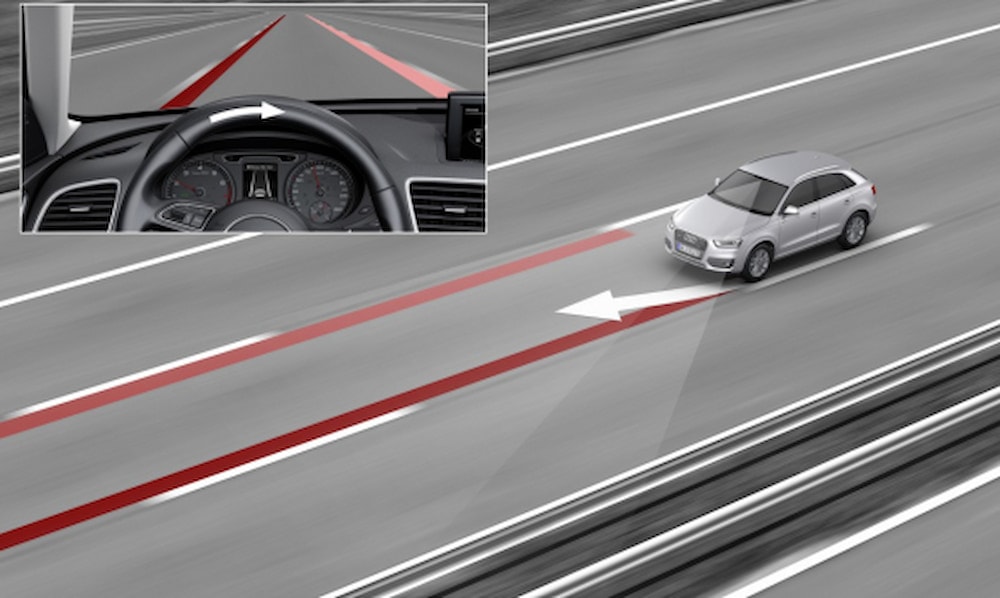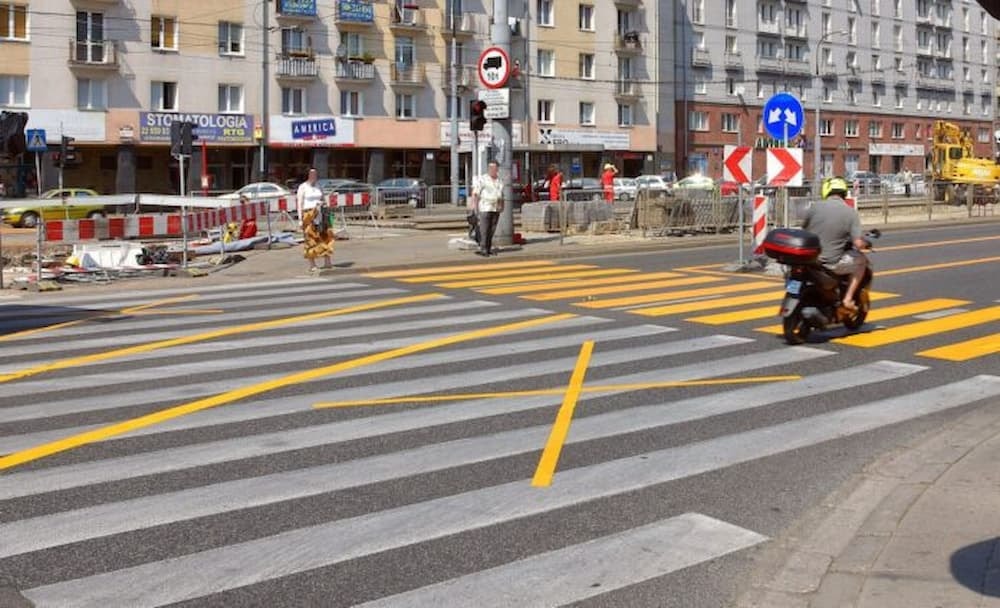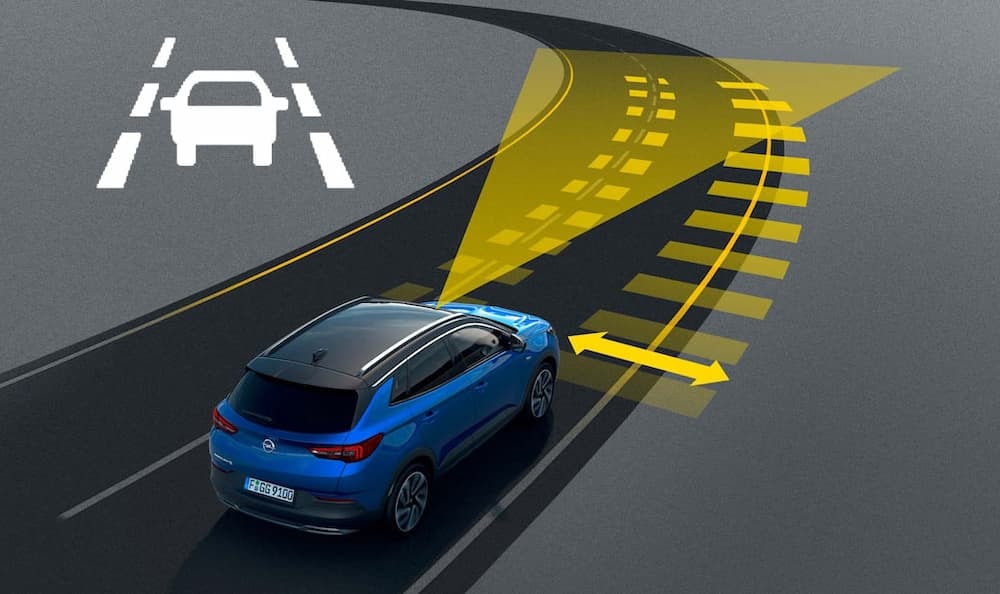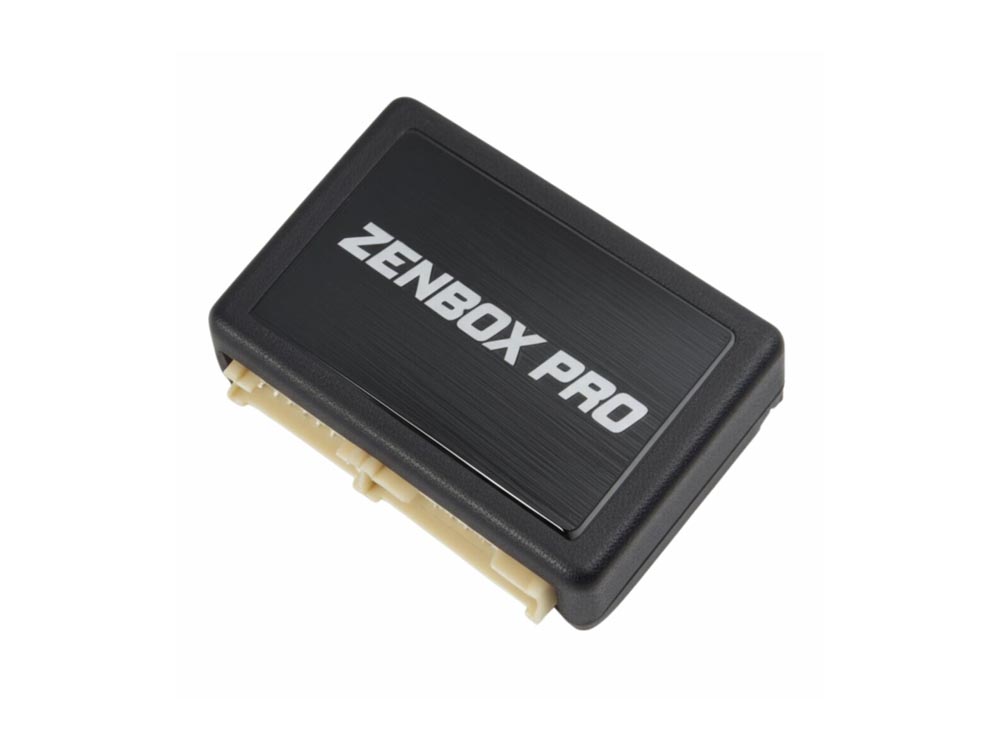Lane assist is one of the most recognisable elements of modern car safety systems. Its operation is based on analysing the lane and reacting appropriately if the car deviates from its lane without the indicator being activated. In an era of increasing numbers of vehicles on the road and increasing emphasis on the safety of passengers and road users, systems such as lane-keeping assist are becoming standard, especially in newly manufactured vehicles.
What is a lane assistant?
Lane assist (Lane Keeping Assist, LKA) is a sophisticated security systemof which working principle involves monitoring the position of the vehicle relative to lane dividing lines. When the system detects that the car is starting to leave the lane without using direction indicator, activates warning systemand in some cases automatically corrects steering systemto get the vehicle back on track belt.

The system typically works on the basis of cameras located behind the windscreen, which recognises lines on the roadway. In more advanced versions, it is supported by infrared sensorswhich improve its effectiveness in adverse weather conditions or when driving at night.
How does lane keep assist work?
Lane keep assist works continuously while driving by analysing the car's position relative to the lane dividing line. If the system considers that the car is going too close to the line or starts deviate from his laneand the driver did not signal it direction indicator, launches:
- beep,
- vibration on the steering wheel,
- hazard signalling on the dashboard.
In the active version, lane assistant not only warns, but also gently intervenes in the steering systemto correct track and keep the car on the right lane.
It is worth noting that lane assistant not to be confused with lane change assistant. The latter is intended to support the driver with changing lanes, reporting on vehicles in blind spot, rather than keeping the car on course.

System components and how they work in practice
To lane assistant worked properly, it needs:
- Cameras high resolution, usually located behind the interior mirror,
- Infrared sensorsto support the recognition of separation lines,
- On-board computer analysing images and sensor data,
- Steering system capable of automatic correction.
When the vehicle is travelling on a road with well-marked lanes, the system works almost flawlessly. However, its effectiveness can drop in situations such as:
- roadworks and modified traffic organisation,
- blurred, illegible lines,
- driving in rain, snow or fog,
- dazzling sunlight,
- poor pavement condition.

Types of systems - passive and active
Lane assist can act as passive system or active:
- Passive system - only warns the driver of leaving the lane by means of audible, visual or vibrating signals.
- Active system - in addition to warnings, interferes with steering systemto gently return the vehicle to the correct belt.
Some vehicles have the option of setting the sensitivity level of the systemas well as his temporary exclusions. However, it is worth remembering that lane assistant does not replace the driver and requires his constant attention.
Lane change assistant - what's the difference?
Lane change assistant (Blind Spot Assist, Lane Change Assist) is another function, although often confused with lane keep assist. Its task is to detect other vehicles that are in the so-called 'traffic pattern'. blind spot - area that cannot be seen in the side mirrors.
The system warns the driver of a potential hazard at the changing lanes, most commonly through:
- flashing LEDs in side mirrors,
- beep,
- vibration in the steering wheel.
Thanks to this feature, the driver can avoid a collision with the another vehiclewho is too close. Some systems may even prevent you from changing lanes if you the car is in a blind spot.
What affects the effectiveness of the lane assistant?
The effectiveness of the system depends on a number of factors, including:
- car model - In more expensive cars, the systems are more advanced,
- quality and settings cameras and infrared sensors,
- technical condition vehicle,
- cleanliness of glass and cameras,
- the quality of signage on the road,
- unfavorable weather conditions.
It is also worth remembering that the system only works if the right vehicle speeds (usually above 60 km/h), so it may be less useful in the city.

How much does lane assist cost?
The price of the system depends on the vehicle manufacturer and model. In new cars lane assistant is often included as standard or as part of the safety package. On cheaper models, it may be an extra chargeable option. costs of the lane assistant between £1,000 and £5,000, depending on the sophistication of the technology.
In case of used cars, the possibility of retrofitting the vehicle with this system is limited and usually requires costly intervention in the steering system and electronics.
Disadvantages and limitations of the lane assistant system
Despite its many advantages, lane assistant is not without its drawbacks. The most common problems include:
- misinterpretation of the track, especially during roadworks or on poorly marked roads,
- too aggressive a correction steering systemwhich can frighten the driver,
- operation only under certain conditions - e.g. in good weather and clear lines,
- the possibility for the system to ignore deleted or temporary markings,
- Risk over-reliance drivers on the system,
- difficulties in assessing the situation when on there is another vehicle on the carriageway or roadworks they change the track.
ZENBOX PRO - the solution for drivers who want choice
For those who appreciate full control of the vehiclewhile wishing to avoid undue interference from systems such as lane assistant, an innovative solution has emerged - ZENBOX PRO.

ZENBOX PRO is an electronic device that allows the temporary or permanent deactivation of certain assistance functions, such as lane assistantwithout interfering with the car's electronics. Thanks to it:
- the car no longer interferes with the track on its own,
- there are no unwanted sound warnings,
- car alone does not correct its path unnecessarily,
- you are free to decide your own driving style,
- you do not lose the manufacturer's warranty.
Device ZENBOX PRO is particularly useful for people who often drive on roads with poor signposting, where the system function properly can't. It's a practical solution for those who want the driver - not the machine - to make key decisions in the while driving.
To sum up, lane assistant is a valuable safety-enhancing feature, but like any system, has its limitations. Thanks to solutions such as ZENBOX PRO, it is possible to drive without unnecessary distractions - according to the driver's preference.
See also:
- Active vs. Passive Safety – What You Need to Know
- Start stop system - operation
- Mandatory passenger car equipment in 2025
- Character recognition system – how does it work?
- ISA System - How the Intelligent Speed Assistant Works
- ADAS system – what is it and how does it work
- Driver Fatigue Detection System – Does It Really Work?
- The most important safety systems in cars
